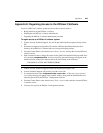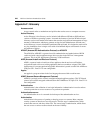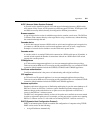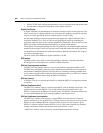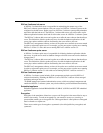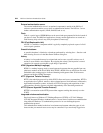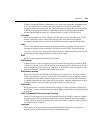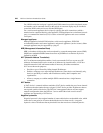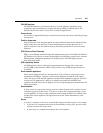
390 DSView 3 Software Installer/User Guide
Appendix F: Glossary
Access control
Access control refers to mechanisms and policies that restrict access to computer resources.
Active Directory
Active Directory is the directory service included with Microsoft Windows 2000 and later
versions of Windows operating systems. It extends the features of previous Windows-based
directory services and contains new features that ease the navigation and management of large
amounts of information, which may generate savings for both administrators and end users.
Active Directory is secure, distributed, partitioned and replicated. It is designed to work well in
any size installation, from a single server with a few hundred objects to thousands of servers
and millions of objects.
ADSAP (Avocent DS Authentication Protocol) or ADSAP2
The ADSAP or ADSAP2 is a protocol used for authentication and authorization of KVM
switch and serial console appliance target device sessions in the DSView 3 management
software. This is an SSL based protocol that uses X.509 certificates.
AIDP (Avocent Install and Discover Protocol)
AIDP is a protocol used to install out-of-box appliances that do not have an IP address
assigned and used to discover existing appliances that have an address assigned. This UDP-
based protocol is not encrypted and only public information is passed over this link. AIDP uses
UDP port 3211. Port 3211 is non-configurable.
Applet
An applet is a program written in the Java language that runs within a web browser.
ASMP (Avocent Secure Management Protocol)
ASMP is a protocol used to securely configure managed appliance settings. This TCP-based
protocol uses an SSL encrypted communications link. AMSP uses TCP port 3211. Port 3211 is
non-configurable.
Authentication
Authentication is the validation of user login information. Authentication is used to enforce
selective permission to access resources or to perform an operation.
Authentication server
An authentication server is a network device that provides authentication services.
Authorization
Authorization is the process of granting or denying access to a resource. Most computer
security systems are based on a two-step process. The first stage is authentication, which
ensures that users are who they claim to be. The second stage is authorization, which allows
the user access to various resources based on the user's identity.










